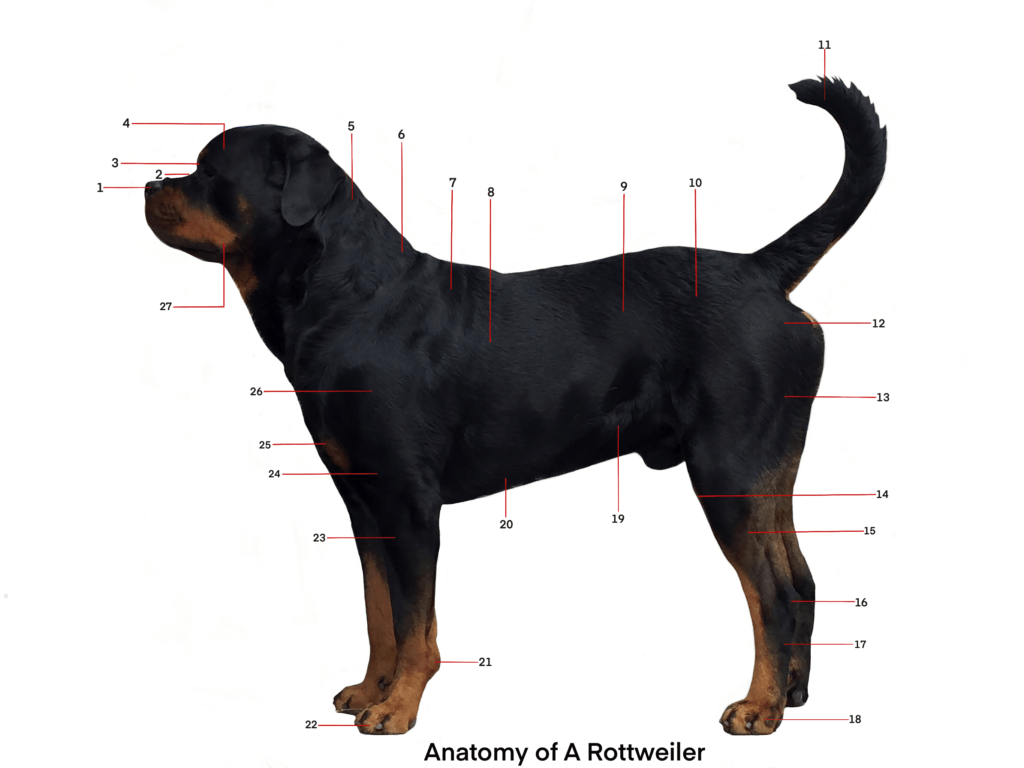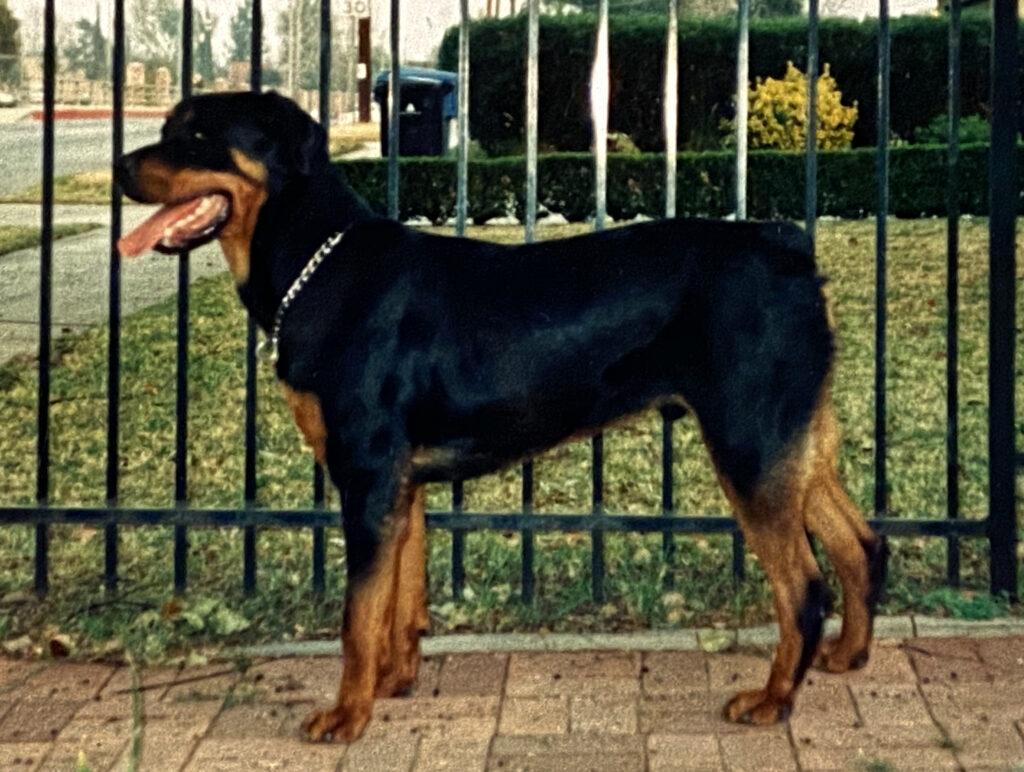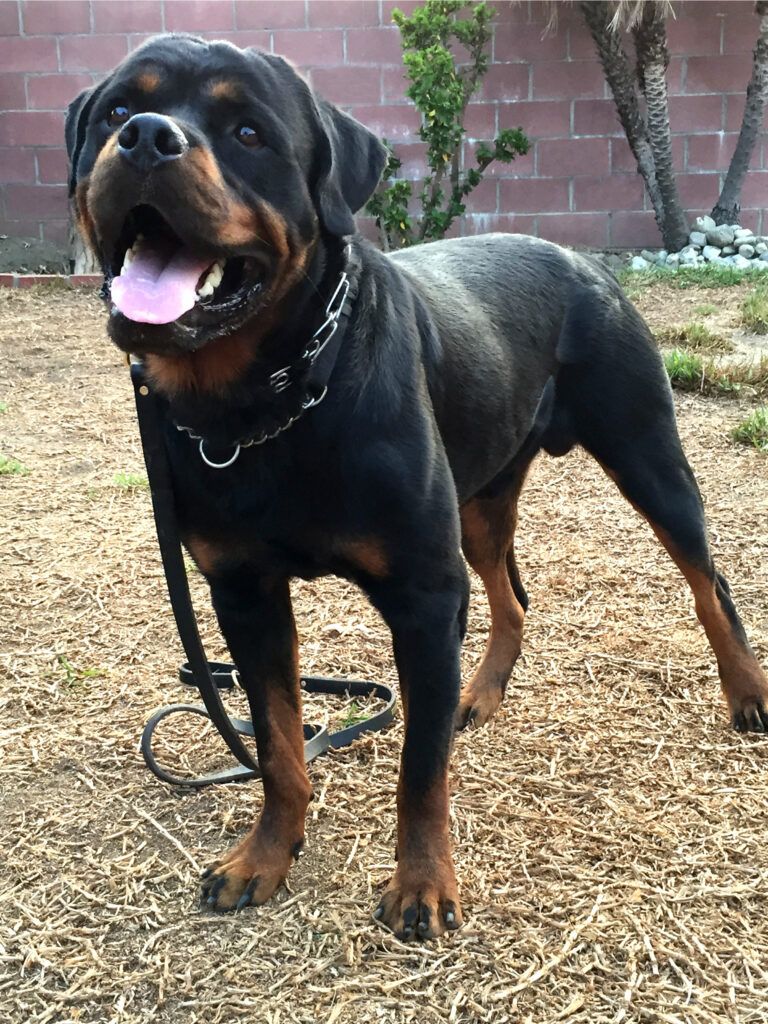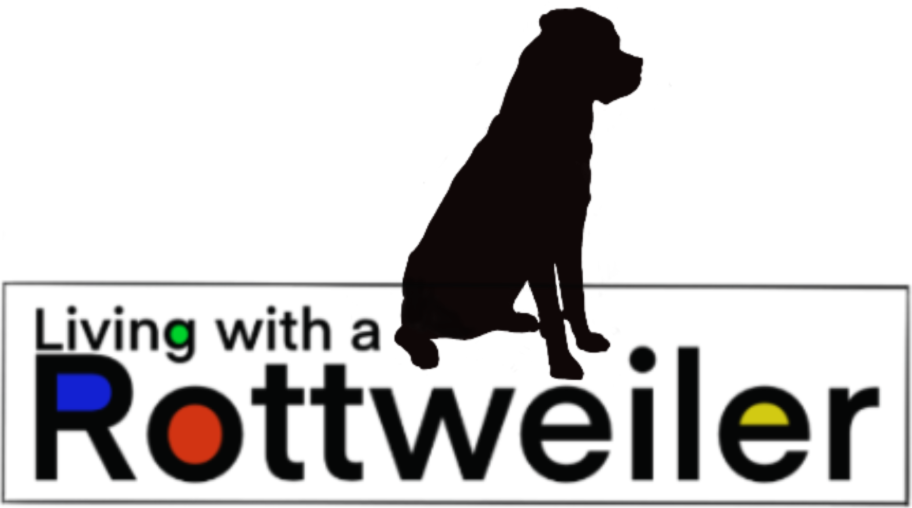The truth about the American Rottweiler and the German Rottweiler
Have you ever wondered what the difference is between the American Rottweiler and the German Rottweiler? I have often thought to myself if there is really a difference between the two. Some questions that have come to mind are: Does the German Rottweiler look different from an American Rottweiler? Are American Rottweilers smaller than German Rottweilers……etc, etc, etc.
One fact that can not be refuted is the Rottweiler’s origins which began in Rottweil Germany, many, many moons ago. Not until the breed was recognized outside of Germany and eventually outside of Europe, would the contrast of the breed begin A classic standoff; “The American Rottweiler Vs. German Rottweiler.”
The American Rottweiler
According to the American Kennel Club, the Rottweiler breed must fit certain Characteristics to be considered true to the breed. These characteristics are official standards of the Rottweiler set forth by the AKC. There is a standard for general appearance, size, weight, and height for the male (Dog), as well as the female (Bitch). The AKC list covers the Rottweiler from head to toe.
- Dogs (males) 24 inches to 27 inches
- Bitches (Females) 22 inches to 25 inches
The AKC prefers that Dogs and Bitches fall within the minimum/maximum range for the sizes listed. There is no indication for a minimum or maximum weight. The AKC standard for the Rottweiler is:
- General Appearance-Medium large, robust and powerful. Black coat with clear rust markings. Dogs should be more massive, and have heavier bone structure than bitches. Males are larger than females in bone structure and muscle mass. Females should be feminine with adequate structure or substance.
- Head-Broad between the ears, and medium length.
- Eyes-should be almond shaped and of medium size, uniform, and dark brown.
- Muzzle-should be broad at base, bridge straight, and tapered towards the tip.
- Nose-Should be black, broad, and round.
- Lips-Should always be black.
- Bite-should have 42 teeth, with 20 upper, and 22 lower. Teeth should be a scissor bite-lower teeth should touch inside of the upper teeth.
- Neck-should be well muscled, slightly arched, no loose skin, and moderately long.
- Body-should have a big broad, deep and large chest.
- Tail-should be docked close to body leaving one to two vertebrae.
- Gait-Rottweiler should be a trotter.
- Temperament-Should be a protector of family and property, confident, courageous, self-assured, and intelligent.
- Coat-should be medium length, flat, coarse, and dense.
- Color-should be black, with mahogany or rust markings. There should be a clear distinction between the black, mahogany, and rust markings. Mahogany and rust markings should be over both eyes, on the cheeks, on each side of the muzzle, there should be a triangular mark on the right and left side of the posternum.
- Forequarters-Legs well-developed, shoulder blade long and laid back. Upper arm should be the same length of the shoulder. Feet should be round with arched toes, pads should be hard, nails short and black. Toes should have black markings.
- Hindquarters-Hindquarters and forequarters should be of the same angle. Upper thigh should be broad, muscled, and long. Lower thigh should de extremely muscled. Hind legs should be straight and wide.
Rottweilers that do not fall under the AKC standard (or have “Faults”) are considered as deviant. The AKC considers Rottweiler faults as:
- Eyes-Yellow eyes, different color eyes, different shaped eyes, or a hairless eye rim.
- Ears-Ears that are creased, held away from the head, ears held away from the cheek, and ears that are folded.
- Muzzle-A mouth lacking pigment (pink mouth).
- Bite-Level bite.
- Coat-Excessively curly, short. Wavy coat. White markings, any place on dog (does not include one or two rust/white hair). Straw colored hair, or sooty markings.
For a more exhaustive list of the Rottweiler breed standards and faults, refer to the AKC website.

| 1. Nose | 2. Muzzle | 3. Stop | 4. Occiput |
| 5. Neck | 6. Withers | 7. Back | 8. Rib |
| 9. Loin | 10. Croup | 11. Tail | 12. Hip |
| 13. Upper Thigh | 14. Stifle | 15. Lower Thigh | 16. Hock |
| 17. Rear Patern | 18. Hind Foot | 19. Flank | 20. Elbow |
| 21. Pastern | 22. Forefoot | 23. Forearm | 24. Upper Arm |
| 25. Shoulder | 26. Chest | 27. Cheek |
The German Rottweiler
Like the American Kennel Club, other dog clubs exist. Some of these clubs are breed specific. The Allgemeiner Deutscher Rottweiler Klub located in Minden Germany was founded in 1907. The ADRK is the governing body for Rottweilers in Germany. ADRK Rottweiler breed standards are:
- Dogs (males)
- Height at withers:
- 61-62 cm small
- 63-64 cm medium
- 65-66 cm large-correct
- 67-68 cm very Large
- Weight: Approximately 50 kg
- Height at withers:
- Bitches (females) 56-63 cm
- Height at withers
- 56-57 cm small
- 58-59 cm medium
- 60-61 cm Large
- 62-63 cm very Large
- Weight: Approximately 42 kg
- Height at withers
The ADRK has also set forth standards for the Rottweiler in Germany, their standards are:
- General Appearance– Medium to large size, proportioned, compact, great strength, agility, and endurance.
- Head-Medium length, broad between ears. Forehead line arched as seen from the side. Occipital bone well-developed. Stop strong, and frontal groove not too deep.
- Eyes-Medium size, almond shaped, dark brown. Close fitting eyelids.
- Muzzle-The front of face should be neither elongated nor shortened as compared to the cranial region. The ratio of the muzzle and length of the skull should be about 1 to 1,5. The nasal bridge should be straight, broad at the base, and tapered.
- Nose-Nose should be well-developed, always black, more broad than round, with large nostrils.
- Lips-close fitting, corner of mouth should not be visible, gums dark.
- Jaws/Teeth-Upper/lower jaw should be broad and strong, with 42 teeth that form a scissor bite. The upper incisors should closely overlap lower incisors.
- Neck-The neck should be fair length, slightly arched, without throatiness, or excessive loose hanging skin.
- Body-Back strong firm and straight. Loins short strong and deep. Croup medium length, rounded, and broad. Chest broad deep, and roomy, well-developed fore chest, and well sprung ribs. Belly flanks not tucked up. Tail should be level in extension to the upper line of the body. Tail should reach to the hocks or be a slightly longer.
- Gait-Rottweiler should be a trotter.
- Temparament-The Rottweiler should be good-natured, placid in disposition, very devoted, biddable obedient, and eager to work. His/her appearance should be natural and rustic, his/her behavior should be self-assured, steady and fearless. He/she reacts to their surroundings with alertness while being even-tempered.
- Hair-Top coat should be medium length, dense, coarse and flat. The coat has a top coat and undercoat. Hind legs should have longer hair.
- Color-The coat shall be black with clearly defined markings of tan on the chest, legs, throat, muzzle, cheeks, over both eyes, and under base of tail.
- Forequarters-Front legs seen from the front should be straight, and not to closely placed to one another. The forearms viewed from the side should be straight. The shoulder blade should be 45 degrees to horizontally. Shoulders should laid back. Upper arm should be close to the body. Forearm should be muscular and well-developed. Pasterns should be strong, stringy, and not perpendicular. Front feet should be round, well arched, and pads should be hard. Nails should be black and strong.
Hindquarters-The legs seen from behind should be straight and not close together. While standing unhindered, obtuse angles should be formed between the upper thigh and hip bone, upper/lower thigh, and metatarsal. Upper thigh should be broad, muscled, and moderately long. Lower thigh should be muscled at top, and sinewy. Hocks should be sturdy, angulated, and not steep. Hindfeet should be slightly longer than front feet. Toes should be arched, tight like the front feet.
Rottweilers that do not fall under the ADRK standard (or have “Faults”) are considered as deviant. The ADRK considers Rottweiler faults as:
- Eyes-Light, deep set, full, round eyes, or loose eyelids.
- Ears-Set to low or too high, heavy, long, slack, or turned backwards. Ears that are not symmetrical, and that are flying.
- Head-Narrow, too short, long, narrow, light, excessively broad skull, deep frontal groove, no stop, not enough stop, too much stop.
- Foreface-Muzzle is long, pointed, or too short, dish faced, pale/spotted nose, acquiline nose, split nose, or convex nasal bridge.
- Bite-Molars of under jaw not in one line, pincer bite.
- Coat-Wavy coat, too soft, too long, too short, no undercoat.
For a more exhaustive list of the Rottweiler breed standards and faults, refer to the ADRK website.
Rottweiler Breed Differences
The AKC and ADRK are very similar in what they consider to be the standard for a pure breed Rottweiler. There are other sanctioned organizations such as the United Kennel Club (UKC), and the Federation Cynologique Internationale (FCI). These organizations have set forth standards for the Rottweiler breed which mirror the AKC and ADRK standards.
If you compare each organizations standard, it becomes clear that there is one standard for the Rottweiler. The Rottweiler breed is strictly monitored in Germany. Rottweiler puppies that fail a suitability test are not allowed to be registered. This method limits puppies with faults from being offered to unsuspecting buyers. As a result of strict breeding requirements, only the best Rottweilers are produced.
The AKC on the other hand allows for a more relaxed requirement for the registration of the Rottweiler breed. This method lends itself to different variations of the Rottweiler breed by backyard breeders. However, the AKC would never allow Rottweilers that do not fall within their standard requirements to participate in any AKC Conformation event. These variations also give the impression that the American Rottweiler is different from the German Rottweiler. If you compare the two Rottweilers in the pictures below, it becomes apparent which Rottweiler comes closest to the breed standard.

Samson

Bravo
Both Rottweilers are similar in color, but if you compare Samson’s head to Bravo’s head you will notice that Bravo has a much larger head, and a shorter muzzle. Samson has a longer muzzle, and smaller head than Bravo. A Rottweiler with this skull variation is not the standard for the breed.
So in actuality, the only differences of any Rottweiler regardless of its local, are the variations of the breed due to the above listed faults. The closer you come to the standard, the closer you come to what a Rottweiler’s appearance should be. In essence, there is only one type of Rottweiler in this world. A Rottweiler that is true to the breed standard!
Bibliography
” American Kennel Club.” https://www.akc.org/.
” Allgemeiner Deutscher Rottweiler-Klub e.v.” https:// www.adrk.de/.
